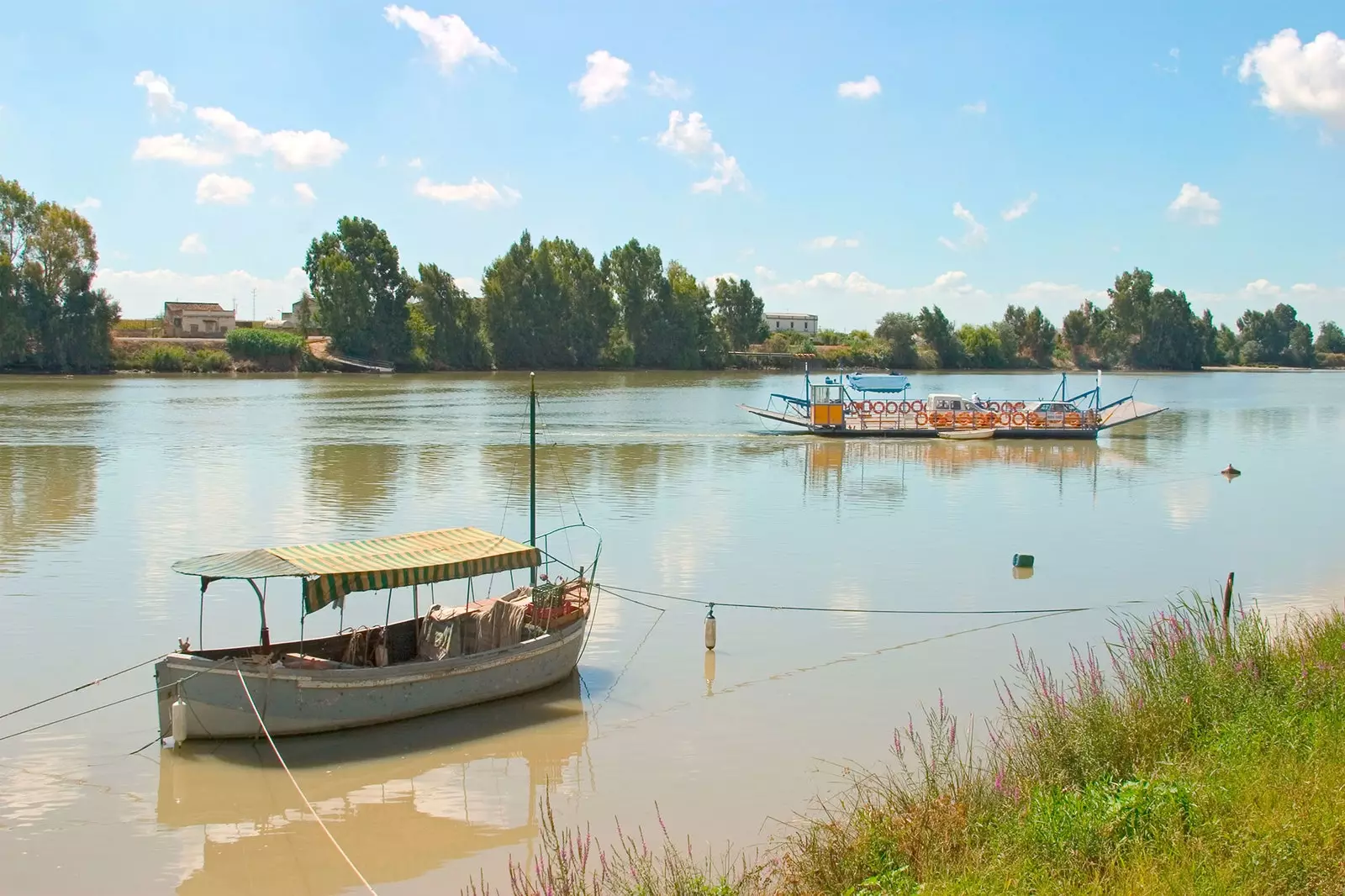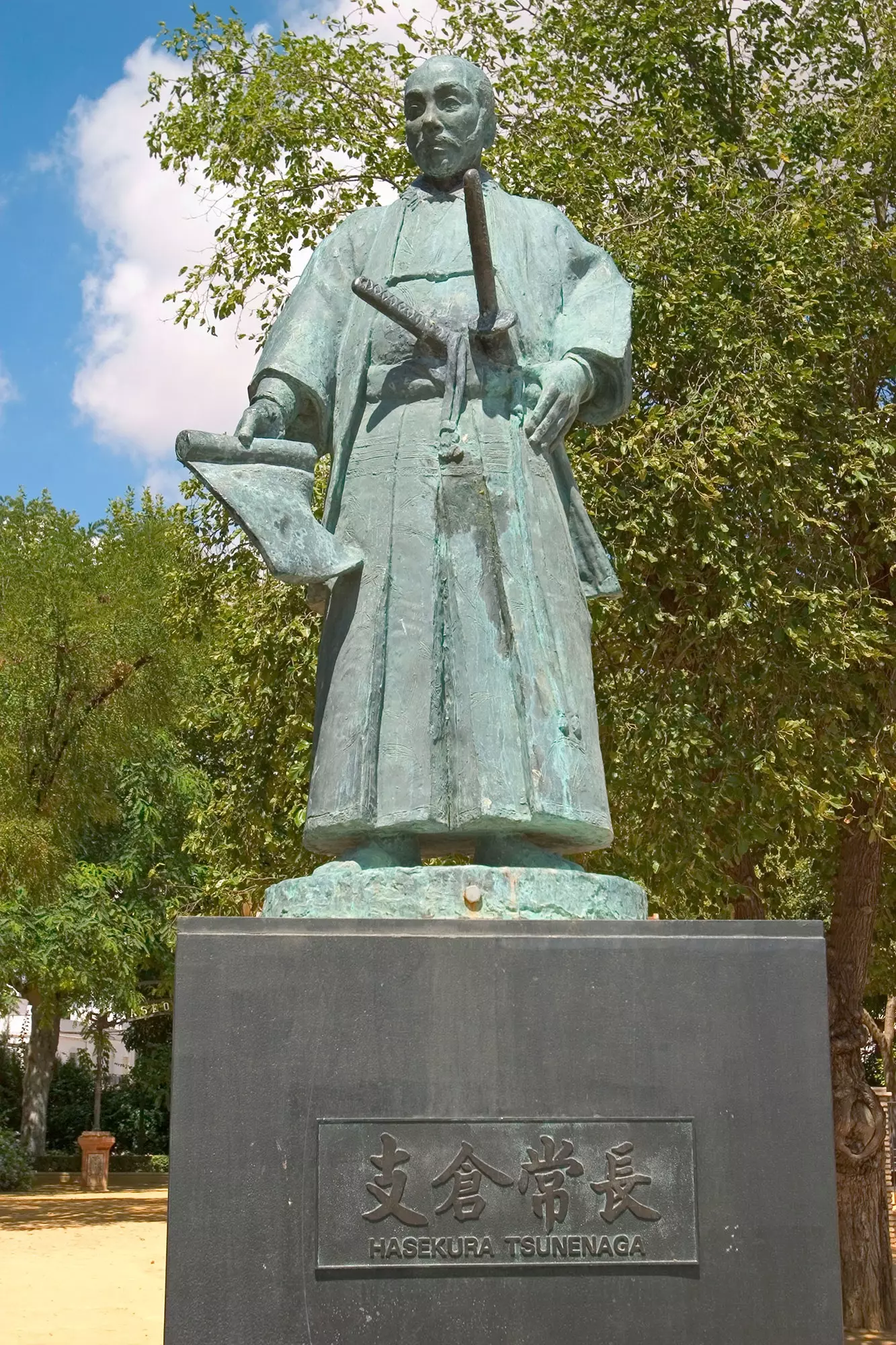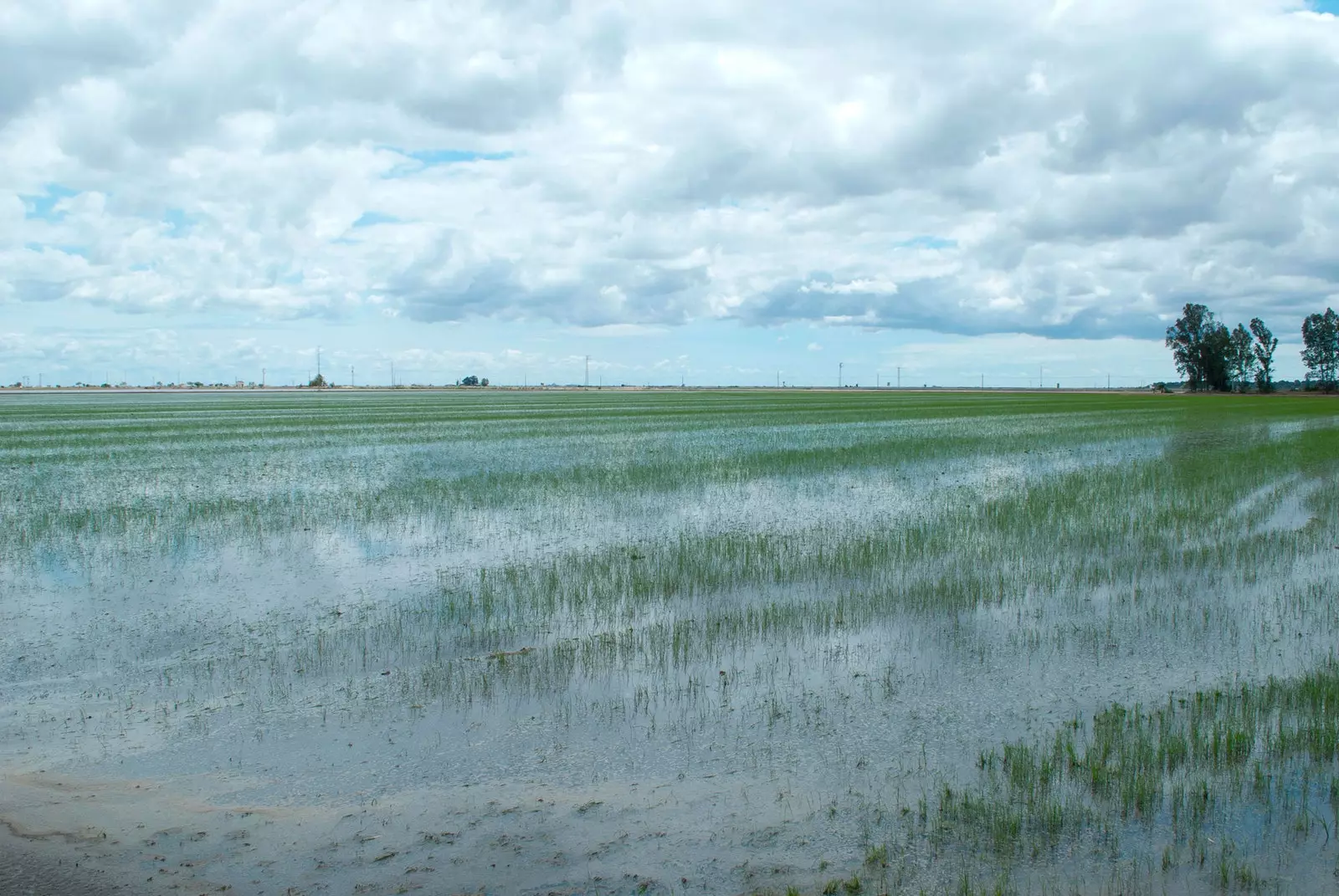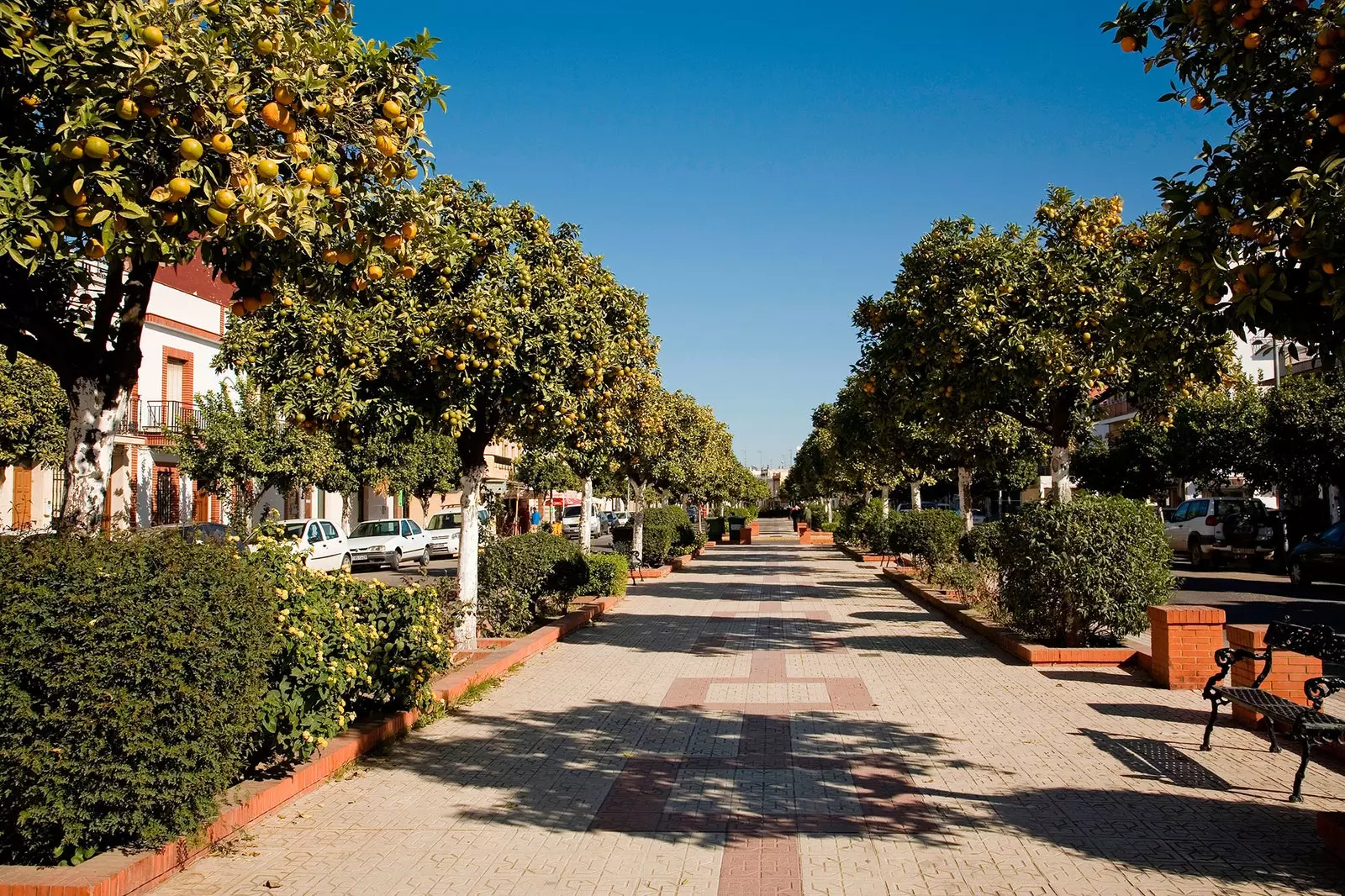
Coria del Río: the samurai legacy that survives in Seville
If we tell you that 15 kilometers from Seville, In the small town of Coria del Río, there are more than 700 neighbors whose last name is Japan, Perhaps it seems to you a most curious anecdote. A funny fact, without more.
If we also tell you that a flag of this country is hung on the facade of its town hall , it will probably surprise you.
But if we also confess that in Coria it is celebrated every year the Japanese Bull Nagashi ceremony , that there is a company that produces a sake drink that is revolutionizing the market and that in 2013 the then crown prince to the imperial throne of Japan, Naruhito, visited the town , maybe you are already beginning to suspect that something strange is going on here.
Well yes, friend: something strange happens. Special, rather. And it turns out that A large part of the residents of Coria del Río are descendants of samurai. How do you read it? How about?
To understand the reason for its origins, we suggest you do something that we love: time travel. In this case, until the year 1614, the date on which the Japanese embassy Keicho, led by Samurai Hasekura Tsunenaga , undertook an adventure from Sendai, Japan, bound for Spain, giving rise to the first diplomatic mission that the Japanese country made to the West.
Mission that, mind you, would make them sail the seas in an elegant galleon, navigate to Sanlúcar de Barrameda and go up the Guadalquivir river to reach the port of Seville, passing through Coria del Río.
Things of life, a part of that peculiar crew was especially attracted to that small town with deep-rooted roots and Andalusian demeanor. So much so that some of its members would end up staying… forever.

Statue of the samurai Hasekura Tsunenaga, in Coria del Río
BEYOND ROMANCE
Delving a little deeper into the true nature of that adventure, history tells us that what brought that entourage to our land was a hint of trade agreement by the lord of Sendai —a landowner from this Japanese city with a lot of desire to make money— with the New Spain of Philip III.
In those deals he was encouraged to intervene too Franciscan Friar Luis Sotelo to try to get a slice. It was a time when ** Jesuits and Franciscans were trying to win the race to control Christianity in the world.**
Sotelo was losing the battle in Japan and decided to enlist in the new mission that he was organizing to try, incidentally, find the protection of both the king of Spain and the Vatican, and that they grant him a bishopric in the north of Japan.
However, the end of that journey would differ greatly from what was expected: in the more than a year and a half that the journey to Spain lasted and after managing to have an audience with the king, Felipe III was distracted with other chores and in Japan Catholicism was prohibited , so those aspirations fell by the wayside.
They did not, on the other hand, those that had been created when they arrived in Andalusian lands: Kasekura Tsunenaga would return to his country of origin, yes, but many of the other samurai, sailors and merchants who accompanied him decided to remain in Coria with a clear intention: to start a new life.

Coria del Río or the samurai tradition of Seville
THE JAPANESE, INGENUITY AS A SURNAME
As the facts go back 400 years, the reality is that Little did the Corianos of the 21st century know of those Japanese roots. Neither about the reason for those Asian features that appeared very slightly in some of its inhabitants, nor about the origin of that surname that was repeated ad nauseam in the town: Japan.
Everything changed when a neighbor, Virginio Carvajal Japan, began to investigate those facts , and even more so when in 2013 the current emperor Nahurito visited Coria to commemorate the four centuries of the mythical expedition. The ties between the Japanese country and the town of Seville were strengthened and, drawing on old documents and bibliography, it was possible to recover a large part of history.
That's how it was found out the surname Japan came from an anecdote of the simplest: when those Japanese settled in Coria del Río began to have a relationship with the women of the town, to form families and to have children, the priest on duty felt incapable of pronouncing his exotic surnames. The simplest solution? Put Japan on them and that's it. Problem solved.
Strolling through Coria today in search of that Japanese past involves —beyond asking one of your neighbors to show you their DNI, just out of curiosity— to approach the Paseo de Carlos Mesa, a beautiful route along the Guadalquivir where the statue that commemorates Kasekura Tsunenaga stands , with kimono and katana included.
It is not uncommon to often find around you groups of Japanese who decide to visit the town in search of the history of their ancestors. It is also very close, by the way, the 'Yashiro on the Shore' monument —the Temple of Souls—, one more tribute to add to that feat, this time by the Japanese artist Kiyoshi Yamaoka in 2017.
For years, the sculpture of Kasekura Tsunenaga has been accompanied by Cherry trees —the first was planted by Nahurito himself, another one by the Japanese designer Kenzo— with whose flowering the Corians celebrated Hanami every spring. But there is more: another of the curious ways in which the town claims its roots is the Toro Nagashi ceremony, held every August.
And what does such a tradition consist of? Well, in a most spiritual rite celebrated in many Japanese towns and in which typical candlelit paper lanterns are thrown into the river —in this case, the Guadalquivir. According to Japanese belief, during the holidays dedicated to the deceased, their spirits visit their old homes and only thanks to the help of those lanterns do they know how to return to the afterlife.
Coria del Río is, by the way, the only place outside of Japan where this tradition is celebrated.

Carlos Mesa Walk
POEMS, ORIGAMIS AND A JAPANESE-ANDALUSIAN SHOT
But beyond the traditional festivals, Coria takes advantage of any occasion to remember those ties that bind him to the country of the rising sun —and which in 2019, by the way, were even portrayed on the big screen by Dani Rovira and María León in the movie The Japan—.
For example, in the Japanese Culture Week : Feel days in which to celebrate your roots with Japanese cooking courses, origami and Japanese calligraphy workshops, traditional music concerts, kimono exhibitions and even cosplay contests. Come on, it's not surprising that the one who most and the least in Coria blurts out a few little words in Japanese and prepares an exquisite sushi in no time.
This great fervor for everything that has to do with the Asian country has made Japan have such a special affection for this little corner of Andalusia that even the emperor dedicated a tanka to him: compositions in verses of five and seven syllables which is normally written by the imperial family and which have a tradition of more than 1400 years. Of course, it is exposed in the town hall.
But if there is something that demonstrates this communion between both countries —and that we love—, it is the inventiveness of the entrepreneur Francisco Bizcocho, that without a second's hesitation he decided to bet a few years ago on something that he knew he would not disappoint: Corian-style sake. And he listens, the business works like any other.
And with Corian style we mean that its creator sought to give it a more local flavor, because in some way it had to be made clear that, after all, you are in Andalusia, so he decided to mix Japanese sake with one of the most traditional local desserts: rice pudding. The result was Keicho Sake , an exquisite cream of which, eye to the data, more than 30 thousand bottles are exported a year to the whole world.
One more example of that legacy that, without a doubt, they left in Coria del Río those seventeenth-century samurai in love with the south. And a wonderful way to toast that Japanese soul that, although it seems more fiction than reality, continues to persist in Coria del Río. No matter how much time passes.
So… Campay!
